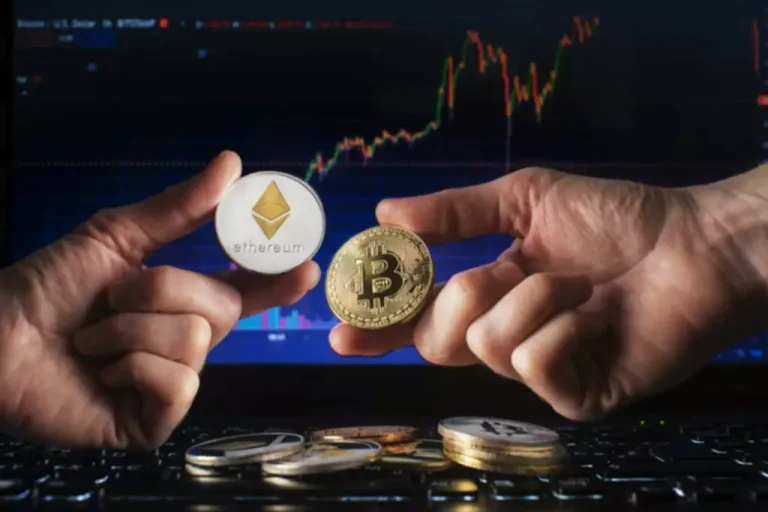A-book Vs B-book Brokers: What’s The Difference
In this mannequin, the dealer acts as an middleman and directly passes client orders to their liquidity suppliers. The liquidity providers then execute the trades on the interbank market. When trading in the foreign exchange or CFD markets, one of the critical decisions traders make is choosing the proper broker. There are two broad classes of foreign exchange brokers which include A-Book brokers and B-Book Brokers. Understanding the distinction between these two sorts is important as a result of it affects commerce execution, dealer profitability, and potential conflicts of curiosity. The Hybrid brokerage model ingeniously marries the attributes of each the A-Book and B-Book fashions, providing brokers a versatile and adaptive operational method.
What’s The A-book Mannequin (stp/ecn) And How Does It Work?
Brokers must navigate these dilemmas with care to maintain up a good trading platform. Developments in expertise and regulatory modernization led to the acceptance of Straight-Through Processing (STP) and Electronic Communication Networks (ECN). Over the final twenty years, the brokerage business has undergone large changes as a result of technological growth, regulation, and the particular wants of traders themselves. It is crucial to understand how brokerage has changed over the years for which to understand the present state of today’s brokerage model.
Relying solely on fee and spread based mostly income can pose challenges for brokers as their earnings are extra carefully linked to trade volumes than the income or losses from trades. In times of buying and selling activity or market standstill, brokers may face a decrease in revenue flow, affecting their profitability. This limitation underscores the significance of building a consumer base and implementing client retention ways. This scenario can lead to a battle of interest, as the brokerage advantages from merchants shedding their trades. While managing all risks internally by not sending trades to another institution has its advantages, it may additionally encourage behaviors such as stop loss searching and price manipulation that negatively impact merchants. Such practices might make it difficult for this model to draw a buyer base and highlight the significance of sustaining ranges of transparency.

Brokerage models come with their distinctive operational traits that convey forth specific moral dilemmas, particularly regarding conflicts of interest and maintaining trust in broker-trader relationships. Subsequently it’s crucial to delve into each model inspecting the internal workings, advantages and drawbacks. Conversely, B-Book buying and selling ensures assured fills and probably tighter spreads, but it introduces inherent conflicts of interest and the potential for wider spreads throughout market volatility. In contrast to the A-Book mannequin, the B-Book mannequin, also called the “Market Maker” model, includes the broker appearing as the counterparty to your trades. This means when you place an order, the dealer itself fulfills it, shopping for from you when you sell and selling to you when you buy. This markup on the spread allows them to make a revenue on each commerce with out taking the other side of the client’s commerce, aligning their interests with those of their purchasers by specializing in volume over commerce outcomes.
Unfold And Cost Of Buying And Selling

This clear execution model ensures that merchants obtain fair prices and probably faster order execution. For example, when a trader locations a buy order for a specific foreign money pair, an A-Book broker will find one of the best obtainable value from a number of liquidity suppliers and execute the commerce at that price. On the other hand, B-Book brokers execute trades internally, which means they act because the counterparty to their clients’ trades. While this may lead to quicker execution pace, as the dealer doesn’t should rely on exterior liquidity providers, it also introduces the potential for slippage or requotes. In some situations, B-Book brokers could use a dealing desk to handle their clients’ orders, which might introduce a delay so as execution. An A-book dealer, also called a Straight Via Processing (STP) dealer, is a type of forex dealer that forwards its clients’ trades on to the market without any interference.
- In this article, we’ll dive deep into the A-Book vs B-Book broker models to explore their variations, advantages, disadvantages, and the way each impacts retail traders.
- In the forex market, it’s extensively recognized that % of merchants lose their preliminary investment inside six months, which works to the advantage of the foreign exchange B-book dealer.
- If you work for an expert trading institution like a prop firm or hedge fund, there are danger measures put in place to stop their traders from blowing up.
- Moreover the A Book mannequin permits numerous market access whereas providing execution speeds to attenuate slippage.
- Moreover, if you’re a beginner dealer or have a smaller trading quantity, B-Book brokers that don’t charge express commissions may be less expensive for your trading activities.
Two frequent categories of brokers are A-book brokers and B-book brokers. Whereas they each facilitate foreign currency trading, they operate in a different way and cater to different varieties of merchants. Understanding the distinction between these two types of brokers is essential for merchants looking to make knowledgeable decisions about their trading methods. In this text, we are going to delve into the specifics of A-book and B-book brokers, exploring their traits, advantages, and drawbacks https://www.xcritical.in/. One Other benefit is the flexibility to offer reduced transaction costs, particularly interesting to merchants with limited account balances. By managing the market, brokers can provide spreads and decrease commissions, making trading more accessible and financially possible for a wider vary of traders.
Nonetheless, inside threat administration of high-risk offers can assist brokers in decreasing dangers and even boosting earnings. An A-Book broker conducts enterprise by sending customer what is a book vs b book orders to exterior liquidity suppliers in the interbank. This ensures that offers are carried out at aggressive prices and that the dealer does not revenue from the trades. In conclusion, the distinction between A-Book brokers and B-Book brokers lies in how they handle client trades and execute orders.
But the B Guide model comes with conflicts of interest since brokers immediately profit from traders losses. This can create a perception of lack of transparency and distrust, potentially straining the broker dealer relationship. Traders may be cautious of dealer manipulation and should query the equity and trustworthiness of the buying and selling setting offered. For merchants operating beneath the A E-book model, fee and spread costs may be comparatively greater leading to increased buying and selling expenses.
Having a standardised method to closing out a retail trader’s positions if their trades are going towards them so severely that they threat blowing their account is a superbly logical measure. One could argue that it’s not the broker’s duty to coach their clients on tips on how to commerce. We all make our own choices, and it’s our personal accountability to inform ourselves and educate ourselves on the risks we take. But in any case – even should you don’t have entry to excessive leverage, if your broker profits out of your losses, then they don’t have any incentive that will assist you educate yourself and get higher at buying and selling.
This setup may not be financially viable for merchants with smaller accounts or those who choose buying and selling in giant portions. It is crucial for such merchants to carefully consider the cost implications to ensure that trading bills do not outweigh income. Traders have the chance to entry market information and suppose about buy and sell prices, which is important for many who closely rely on market evaluation for his or her trading methods.
A Hybrid model combines the strengths of each Proof of space A-Book and B-Book execution methods to optimize profitability whereas managing danger. AI-enabled models not solely increase execution effectivity but also provide brokers with the scalability to proceed to increase operations while properly maintaining compliance standards and performance. Each model offers its set of benefits, drawbacks and operational processes influenced by the changing dynamics inside the trading trade. When deciding on a trading technique, consider elements corresponding to your risk tolerance, preferred trading fashion, and the extent of transparency you seek from your broker.
Related Posts
Pdf Lively Versus Passive Investing: An Empirical Study On The Us And European Mutual Funds And Etfs
First, analysis (see right here and here) has discovered that active institutional buyers (such asRead More
9 Greatest Ecn Forex Trading Brokers In 2025
This ensures ultra-low spreads, quick execution, and no dealing desk interference, creating a good andRead More
The Game-changer: Aml Risk Assessment Template For Efficient Danger Administration
Organizations must also incorporate feedback from audits, regulatory inspections, and inner reviews to enhance theirRead More
Comments are Closed